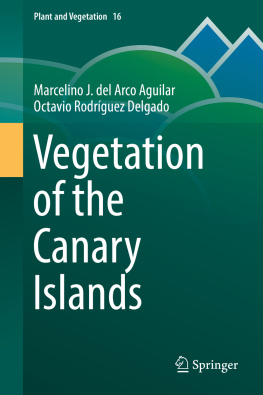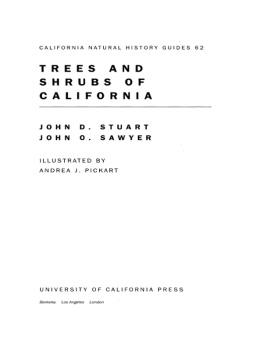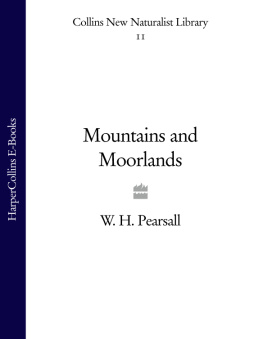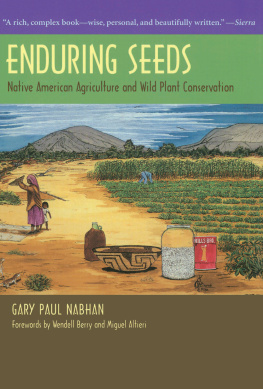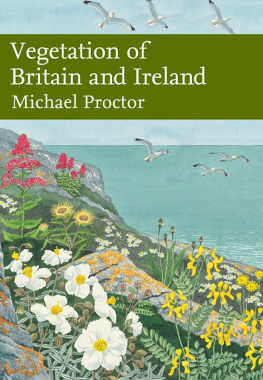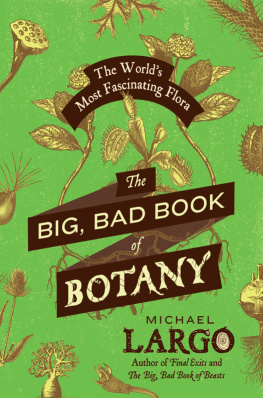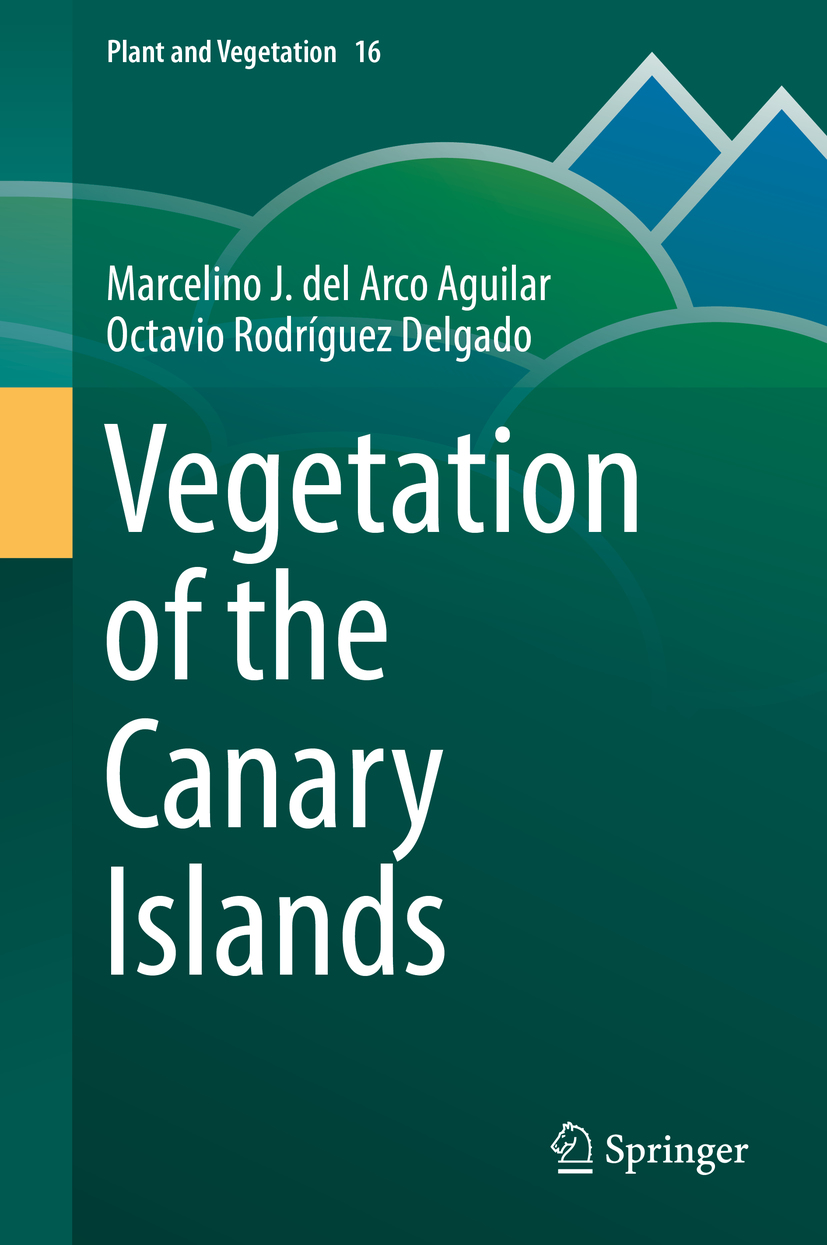Volume 16
Plant and Vegetation
Series Editor
M. J. A. Werger
Utrecht, The Netherlands
Plant and Vegetation is a new Springer series comprising a series of books that present current knowledge and new perspectives on world vegetation. Examining the ecology of plants and vegetation at all scales from plant to landscape and covering key issues such as globalization, invasive species, climate change and the dynamics of plant biodiversity, this book series draws together a wide range of material of interest to plant ecologists, vegetation scientists, and geographers around the world. The series provides a valuable resource for both graduate students and researchers in environmental and biological sciences, as well as for landscape planners and policy makers involved in land-use and restoration projects at local, regional and international levels.
More information about this series at http://www.springer.com/series/7549
Marcelino J. del Arco Aguilar and Octavio Rodrguez Delgado
Vegetation of the Canary Islands
Marcelino J. del Arco Aguilar
Department of Botany, Ecology and Plant Physiology, University of La Laguna, San Cristbal de La Laguna, Tenerife, Spain
Octavio Rodrguez Delgado
Department of Botany, Ecology and Plant Physiology, University of La Laguna, San Cristbal de La Laguna, Tenerife, Spain
ISSN 1875-1318 e-ISSN 1875-1326
Plant and Vegetation
ISBN 978-3-319-77254-7 e-ISBN 978-3-319-77255-4
https://doi.org/10.1007/978-3-319-77255-4
Library of Congress Control Number: 2018936354
Springer International Publishing AG, part of Springer Nature 2018
This work is subject to copyright. All rights are reserved by the Publisher, whether the whole or part of the material is concerned, specifically the rights of translation, reprinting, reuse of illustrations, recitation, broadcasting, reproduction on microfilms or in any other physical way, and transmission or information storage and retrieval, electronic adaptation, computer software, or by similar or dissimilar methodology now known or hereafter developed.
The use of general descriptive names, registered names, trademarks, service marks, etc. in this publication does not imply, even in the absence of a specific statement, that such names are exempt from the relevant protective laws and regulations and therefore free for general use.
The publisher, the authors and the editors are safe to assume that the advice and information in this book are believed to be true and accurate at the date of publication. Neither the publisher nor the authors or the editors give a warranty, express or implied, with respect to the material contained herein or for any errors or omissions that may have been made. The publisher remains neutral with regard to jurisdictional claims in published maps and institutional affiliations.
This Springer imprint is published by the registered company Springer International Publishing AG part of Springer Nature.
The registered company address is: Gewerbestrasse 11, 6330 Cham, Switzerland
Acknowledgments
We thank the editor of the Plant and Vegetation series Marinus J.A. Werger for his valuable help during the process of writing and editing this book. His suggestions, advice and corrections were important for improving its content. We are also grateful to Valeria Renaud (Publishing Editor) and Ineke Ravesloot (Assistant Editor) for their kind assistance as well as Sathiamoorthy Rajeswari (Project Manager at SPi Technologies India Pvt Ltd). Thanks also to Guido Jones Carter for his comments and preliminary proofreading.
Special thanks are due to all botanical colleagues at the University of La Laguna with whom we have shared laboratory and field work, and publications, during our careers.
Thanks to GRAFCAN for kind permission for including versions of our maps (Mapa de Vegetacin de Canarias).
Introduction
Marcelino J. del Arco Aguilar
Octavio Rodrguez Delgado
The purpose of this book is to describe the vegetation of the Canary Islands, including relevant floristic aspects, for students and scholars of nature. The work is a synthesis of numerous publications and also provides data derived from the experience accumulated by the authors during many years of teaching and research in these subjects at the University of La Laguna. It tries to reflect the enormous floristic and phytocoenotic biodiversity of these islands, which constitute natural laboratories for studies of flora, vegetation, biogeography, geology, bioclimatology, ecology, and so on. To do this, in the preliminary chapters, we approach topics essential to a contextual understanding of the physical and biotic framework in which the vegetation units are described.
The geographic framework chapter situates the Canaries as oceanic and volcanic islands in the context of Macaronesia and provides geographical data of interest. The climate chapter defines the main factors determining the Canary climate and its variety, paying particular attention to the decisive influence of the trade winds in the generation of different climatic zones typical in the development of the distinct plant communities. In addition, the main types of weather are synthesized. The chapter on bioclimate provides selected key data, as considered in the world bioclimatic classification in the establishment of its various units. There is special reference to those data used for characterization of bioclimatic belts within the Mediterranean macrobioclimate. Correlations between potential climatophilous communities and bioclimatic belts in the Canary Islands are established, providing representative bioclimographs and examples of bioclimatic cartography.
The biogeography chapter begins with considerations about the plant colonization of the archipelago in a variable geological and paleo-climatic framework, since the appearance of the first subaerial edifices of the archipelago and its surroundings. The possible vectors of colonization and the main sources of flora are established. Finally, the biogeographic classification we follow is justified by means of geographic, bioclimatic, floristic, and phytocoenotic criteria, considering the Canaries as included within the Canarian-Madeiran subregion of the Mediterranean region. This chapter touches on different floristic aspects, which are further explained in the next chapter on other floristic considerations. Insular plant ( s . l .) biodiversity is quantified and the importance of generic and specific endemics is highlighted, comparing them with those of the other Macaronesian archipelagos. Common and differential elements are exemplified.
The vegetation chapter constitutes the bulk of the work. Vegetation is characterized from a phytosociological point of view. First, we present an overview where the main potential communities growing from coast to summit are characterized, framing them within their altitudinal limits and bioclimatic belts. Physiognomy, structure, environmental aspects, floristic composition, origin and affinities, and distribution are considered in their descriptions. Their main substitutional communities are indicated and also, where appropriate, the other important edaphophilous communities growing in their climatophilous domains. In the section current vegetation units, we follow a syntaxonomic nomination for the communities, although sometimes some physiognomic units are additionally included. The communities are later collected and ordered into a syntaxonomic catalog, in Appendix . Summarized descriptions of communities (physiognomy, structure, bioclimatic belts, environmental factors, dynamic status, character species, and distribution) are provided. Descriptions of special Canary communities are further detailed, especially those with a climatophilous character or greater representivity in the Canary landscape. For each of the four most representative phytosociological classes of climatophilous vegetation we have inserted a list of characteristic species of their communities. In the section Potential vegetation, the climatophilous and edaphophilous vegetation series are summarized by mentioning the typical communities representing their final stages. The main permanent communities are also listed, ordered according to the environment in which they grow. Then, we briefly mention the most typical vegetation complexes and geosigmeta. The species are acompanied by the family to which they belong, their common name, biotype, and island distribution.

